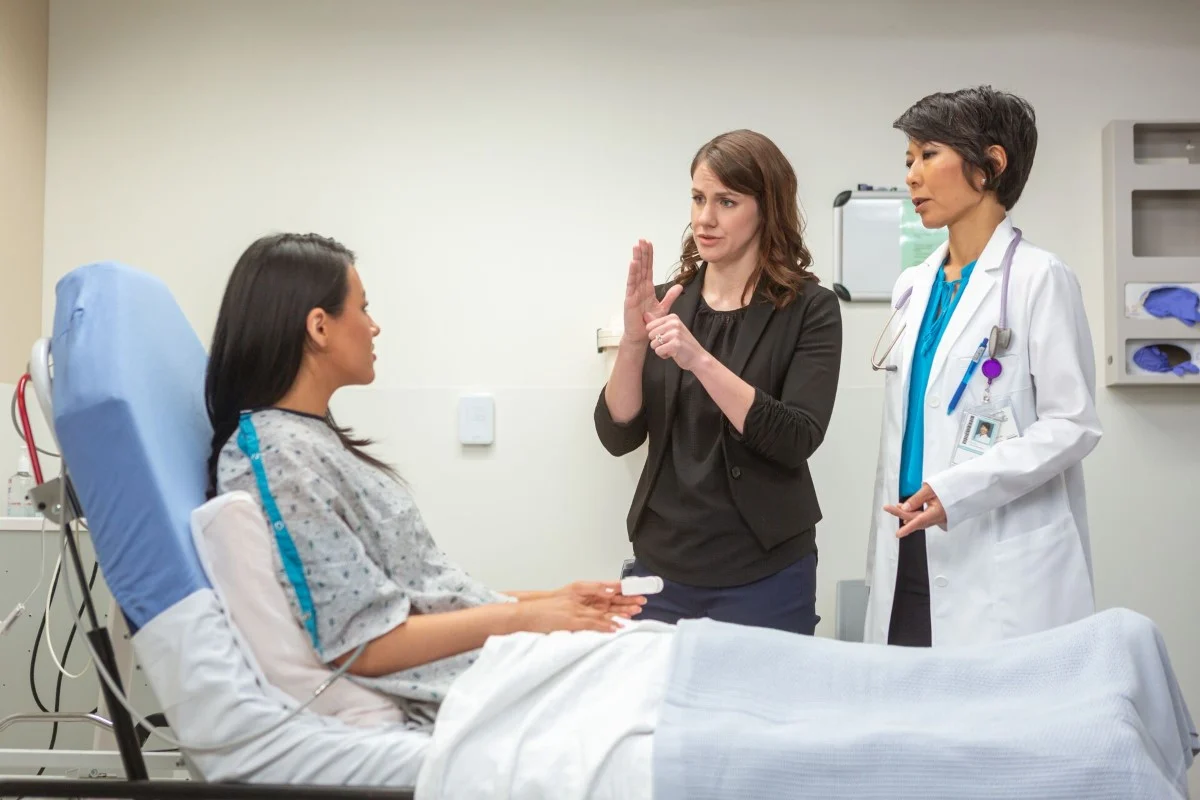In recent years, automatic speech recognition (ASR) and machine translation (MT) technologies have made remarkable strides. Yet despite this progress, one demographic remains underserved: people with Parkinson’s disease. Characterized by tremors, bradykinesia (slowness of movement), and muscle rigidity, Parkinson’s can also affect speech, causing reduced volume, imprecise articulation, and variable pacing. Designing a speech-to-speech translation system for Parkinson’s patients is, therefore, far more complicated than simply adapting off-the-shelf ASR and MT models. This article explores the key development challenges in this field and outlines strategies for building a truly accessible, reliable solution.
The Unique Speech Profile of Parkinson’s Patients
Parkinson’s-related dysarthria manifests in a variety of ways, making conventional speech processing difficult. Patients often speak with reduced loudness and monotonicity, which makes it challenging for traditional ASR systems to accurately detect word boundaries or stress patterns. Furthermore, articulatory imprecision is a significant issue; consonants and vowels may become slurred or merged, especially in running speech, leading to high ASR word-error rates. Simultaneously, speaking rate and pauses are highly variable, with some utterances rushing and others dragging, often accompanied by long, unpredictable pauses. These characteristics create a wide mismatch between real-world patient speech and the clean, well-recorded data on which commercial ASR systems are trained. Consequently, custom solutions are necessary at every layer of the system’s development pipeline.
Data Scarcity and Annotation Complexity
A robust ASR model requires thousands of hours of accurately transcribed speech. Yet collecting and annotating speech data from Parkinson’s patients presents multiple hurdles. First, there's the difficulty of recruitment and diversity. Since Parkinson’s progresses differently across individuals, developers need data spanning early to advanced stages, various dialects, and different ages to ensure generalizability, which is both time-consuming and costly. Second, annotation consistency is a concern. Transcribers must decide how to mark hesitations, self-corrections, and slurred sounds; without clear guidelines, annotations become inconsistent, deteriorating model training. Finally, privacy concerns are paramount. Medical data protection laws strictly restrict how patient recordings can be stored, shared, and used, necessitating informed consent and robust data governance frameworks, which adds layers of legal overhead. To address these issues, some research groups have begun creating specialized corpora – recordings of read and spontaneous speech by Parkinson’s patients, annotated with rich phonetic and dysarthria tags. However, these resources tend to remain siloed within academic institutions, highlighting the urgent need for industry-academia partnerships to expand public data resources.
Acoustic Modeling: Beyond “Off-the-Shelf” ASR
Standard ASR acoustic models rely on deep neural networks trained on thousands of hours of clear speech. Adapting these for Parkinson’s dysarthria requires specific modifications. One approach is fine-tuning with patient data. While transfer learning can help, with too little patient data, models might overfit or fail to generalize. Data augmentation techniques—such as speed perturbation, vocal tract length normalization, and noise injection—can partially compensate. Additionally, speaker adaptation techniques are crucial. Feature-space Maximum Likelihood Linear Regression (fMLLR) or i-vector adaptation can personalize models to individual vocal tract characteristics, improving recognition of slurred or soft speech. Moreover, acoustic front-end enhancements are essential. Employing robust voice activity detection and noise suppression, specifically tuned to whispered or low-volume speech, helps isolate the patient’s voice, especially in noisy home environments. When evaluating model performance, word-error rates (WER) alone may not fully capture intelligibility improvements for dysarthric speakers; metrics that weigh phoneme error severity or listener comprehension tasks provide a more accurate picture of real-world performance.
Linguistic Modeling and Translation Challenges
Once the speech is accurately transcribed, it must be translated. General-purpose MT systems often struggle with the disfluencies common in spontaneous patient speech. For instance, handling disfluencies is a critical step; hesitations (“uh,” “um”), repetitions, and false starts should ideally be filtered out before translation, requiring a dedicated disfluency detection and removal module. The translation of medical and emotional content also presents significant challenges. Parkinson’s patients may discuss medication side effects, emotional frustration, or motor symptoms, and a generic MT system might mistranslate domain-specific terms (e.g., “bradykinesia”) or lose emotional nuance. While fine-tuning on medical and patient forum data can help, it again runs into data scarcity. Furthermore, preserving the patient’s voice is vital; overzealous “formalization” of translation risks stripping away the patient’s personal tone, so striking a balance between accuracy and naturalness is key. Combining rule-based post-editing for critical terminology with neural MT fine-tuned on domain-specific corpora offers a middle ground. Additionally, introducing interactive “human-in-the-loop” post-editing platforms allows clinicians or caregivers to quickly correct mistranslations, further improving quality over time.
Real-Time Processing and Latency Constraints
A truly useful system must operate in (near) real time. However, complex acoustic adaptation, disfluency filtering, and translation steps can introduce latency. To optimize the pipeline, implementing incremental transcription—where audio streams are partially transcribed as they come in, rather than waiting for the end-of-utterance—can shave off hundreds of milliseconds. The trade-offs between edge and cloud processing are also crucial. On-device (edge) processing reduces round-trip latency but is constrained by compute and memory; cloud processing offers more power but adds network delay. A hybrid design, often with a lightweight on-device front end and a cloud-accelerated back end, typically yields the best compromise. Simultaneously, user feedback loops are essential; providing the patient with visual or haptic cues (e.g., “processing…”) helps reduce frustration during inevitable lags. Rigorous user testing with Parkinson’s patients ensures that acceptable latency thresholds—often under 500 ms for speech tasks—are met without sacrificing accuracy.
User-Centric and Ethical Considerations
Technology alone doesn't guarantee adoption. For Parkinson’s patients, factors such as ease of use, privacy, and trust are equally important. First, an intuitive interface is critical: large buttons, clear icons, and minimal menus help users with motor tremors, and voice-activated controls must tolerate dysarthric input. Second, data ownership and privacy are paramount. Patients should explicitly opt in or out of data collection, and all recordings must be encrypted at rest and in transit, with transparent policies on retention and deletion. More importantly, clinical collaboration is vital; partnering with neurologists and speech therapists from the outset ensures the system addresses genuine patient needs and respects medical best practices. Finally, developers must guard against overpromising. Speech recognition for Parkinson’s is inherently imperfect, and residual errors—especially in critical medical contexts—can have serious consequences. Clear disclaimers and fallback options (e.g., caregiver review) are therefore essential.
Future Directions
The roadmap ahead is promising. Multimodal inputs will be a key area, combining facial expression, lip-reading, and inertial sensor data from wearables to compensate for severely impaired speech segments. Adaptive learning systems that continuously learn from each patient’s corrected translations will become more personalized and accurate over time. Furthermore, the establishment of open platforms, including shared benchmarks and public datasets for Parkinson’s speech, will significantly accelerate innovation across both academia and industry.
By tackling data scarcity, acoustic adaptation, translation accuracy, latency, and user-centric design in tandem, we can ultimately build speech-to-speech systems that genuinely empower Parkinson’s patients—helping them communicate with loved ones, participate in telemedicine, and engage more fully with the world.
Whether it's research corpora, medical records, or everyday conversations, Artlangs Translation offers high-quality, confidential, and empathetic translation experiences. Contact us today for more information!











